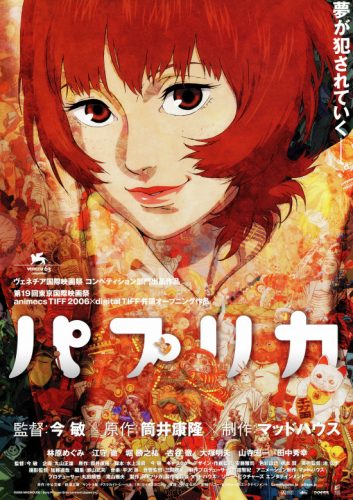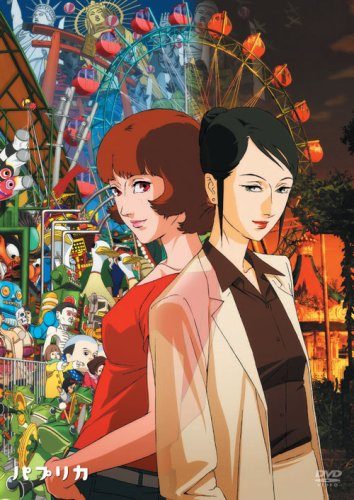
Satoshi Kon is legendary, a man whose multiple talents as a director, screenwriter, and artist allowed him to push the anime and film medium in new directions. Perfect Blue, Millenium Actress, Tokyo Godfathers, and of course, Paprika were his works within cinema, Perfect Blue being his first and Paprika being his last. As Kon directed the movies, his surreal stories adopted a uniquely powerful cut: the match cut. For this article, we will briefly talk about Paprika’s plot and how the match cut effectively portrays a mixing of reality and dreams.
Satoshi Kon’s Surrealistic Film: Paprika

Satoshi Kon has a knack for surrealism. Surrealism is a 20th century movement within art and literature that had a focus: the unconscious mind. This would be achieved usually by comparing and contrasting irrational things. In Paprika, the subject matter deals with dreams (unconscious mind) and reality (rational mind). What connects these things is the DC Mini, an experimental device that allows one to view a patient’s dream.
This merging of reality and dreams also merges genres, creating connections where they were not before. In particular, this is noticeable at the start of the movie. Detective Konakawa is in pursuit of a killer. To the audience, what initially seems to be a murder mystery, a genre that relies on logic, quickly throws logic out the window--but not Konakawa with it. Instead, we dive deeper into Konakawa’s subconscious through his experience of cinema.
Audience members, through the film Paprika, dive further into a character's thoughts about movies, culminating in a surreal (and meta) commentary about cinema and its impact on our identity. As we exit out of Konakawa’s dreams, we are then given perspective. The DC Mini was attached to the detectives heads and Paprika was his therapist.
As the movie continues, dreams merge into reality, distorting common logic. The dreams that define people's’ identities get connected, a sort of communal sharing of the subconscious. Movies help create a context for this, and what was originally a “murder mystery” develops its narrative into a fantasy.
The Stylistic Match Cut
Let’s begin with the basics. A cut is a basic form of film transition that happens post-production (editing after a film has been shot). A cut simply transitions from one scene to the next. Among film transitions, there are multiple types of cuts that produce different effects, and one of these cuts is the match cut.
The match cut is aptly named: it is a transition from one scene to the next where a common visual element connects the two. For example, one scene may have a character smoking. The cigarette’s smoke rises into the air and the camera pans upwards. When the camera pans back down, we find that the smoke is no longer from the cigarette but from incense at an altar. The connecting image was the smoke, and the creativity used in a match cut can lead to some of cinematography’s greatest cuts.
The Logic Behind Paprika’s Match Cut
For a movie about interconnectedness, a way to show that is through seamless transitions. While watching dream sequences can be jarring, it’s important to remember that dreams have their own internal logic, and what may seem strange to a person in reality will not seem strange to the dreamer. How then does the director communicate that even jarring dreams aren’t necessarily disconnected?
The match cut is Satoshi Kon’s answer, a transition that fits the themes of the movie and cues the viewer. As mentioned before, the match cut wants to “match” an image from one scene and the next, allowing for a connecting idea to follow through. The opening scene with Kaonokawa’s dream sequences and the movie’s opening film credits prep the viewer for what’s to come. Viewers are playing a wordless game of image association. Satoshi Kon wants you to conjure up your subconscious (association), placing you in the right mindset for Paprika.
Final Thoughts
There is a lot to say about Satoshi Kon’s talent in film, and this article could have gone in many directions. I’ll have to admit I’m fairly new to his works, but my intrigue at his skill in screenwriting and directing has convinced me to watch his works in more depth. While brief, I do hope this article gives some insight into Satoshi Kon’s skill. I’m personally invested in studying his works more.
Recommended Post


